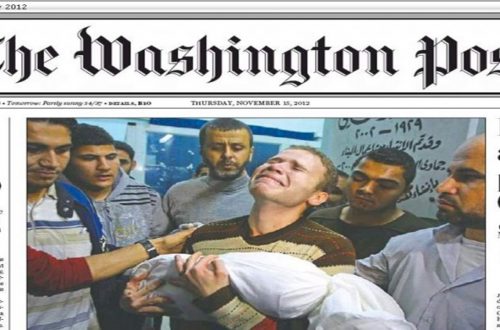Guest post by Karl Pfeifer
The Communist regime of the People Republic of Hungary did not appreciate my articles. They were enough to get me expelled from the country four times between 1980 and 1987. I was accused of being a “political-ideological” saboteur.
Austrian diplomats defended my right to report from Hungary. So at the end of 1982, I was informed that the Hungarian authorities would grant me permission to enter the country– if I offered to write about a nonpolitical topic. I was at the time editor of the official monthly of the Jewish community of Vienna.
I thought the 100th anniversary of Tiszaeszlár blood libel– an accusation of Jewish ritual murder in that Hungarian village which led to the arrest, imprisonment, interrogation and eventual trial of 13 Jewish defendants from April 1882 until August 1883– would not be considered current affairs. I was mistaken. The chief of the press department of the Budapest Ministry of Foreign Affairs warned me: “Mr. Pfeifer, we’ll not allow you to import anti-Semitism from Vienna. We have solved that problem once and for all times in 1945”.
Many Jewish Hungarians believed this to be the case– as if not speaking about a problem would make it nonexistent.
Since the change of system in Hungary 25 years ago, every government has promised to fight antisemitism. Yet opinion research over the years proves that antisemitism is growing. It would be a mistake to put the blame for this worrying drift solely on the neo-Nazi Jobbik party.
Under Prime Minister Viktor Orbán, “patriotic” historians try to rewrite Hungary’s history to absolve the Horthy regime of any responsibility for what happened in the early 1940s. At the beginning of the Holocaust remembrance year on January 2, 2014, Orbán established a “Veritas [sic!] Historical Research institute” to “strengthen national awareness”. To carry out this “historically important patriotic task,” the institute was placed under the leadership of Dr. Sándor Szakály, a military historian who had already revealed himself as a defender of the wartime activities of the Hungarian gendarmerie and as a minimizer of the plight of the Jewish labor servicemen.
Szakály demonstrated his history-cleansing qualifications for his appointment by reinterpreting two horrific events of the Nazi era. He minimized the roundup and deportation of approximately 18,000 “alien” Jews, most of whom were murdered near Kamenets-Podolsk in the summer of 1941. Szakaly describes the 1941 deportation and subsequent murder of Jews as an “action of the immigration authorities against illegal aliens.” At the same time Hungary welcomed thousands of Christian refugees from Poland, in seeming disregard of the supposedly inflexible alien administration regulations that were used as pretext for the brutal expulsion of Jews from eastern Hungary by the Hungarian gendarmerie with the aim of delivering them to mass murder at the hands of the Germans and their Ukrainian henchmen.
Orbán was also behind the erection of a monument marking the German occupation of Hungary, showing an eagle attacking an angel (the Hungarian people) and thereby whitewashing the prominent role that pro-Nazi Hungarian governments had played in the murder of Jews during the Holocaust. This led to a conflict with leaders of Mazsihisz, the Federation of Jewish Communities in Hungary, and with Hungarian intellectuals, amongst them a group of historians. The Jewish umbrella organization pulled out of government-led activities in commemoration of the 70th anniversary of the Nazi occupation of Hungary earlier this year and said it would not attend the unveiling of the statue at Budapest’s Freedom Square.
According to Orbán, Hungary’s leaders were guilty not because of what they did
but because of what they didn’t do. It wasn’t that they actively collaborated; rather, they failed to defend the country against the German invaders, thus absolving them from responsibility for the Hungarian Holocaust.
Orbán asks, in what he describes as the most important question, “What can we do, especially our own generation born after the events who are committed to Christian values, to national self-respect and to national pride based on correct self-knowledge?” In his view Hungarians did everything that needed to be done. They apologized, they made reparations, “but at the same time we cannot bear a responsibility that is not ours to bear.” Therefore, “without the acceptance of these facts it is difficult to imagine a sincere cohabitation based on trust in the future… And our generation became followers of radical, anti-communist politics because we had had enough of an insincere life built on a lack of trust.”
One could ask: what does anti-communism and the lack of trust in the Rákosi and Kádár periods have to do with the relationship between the government and those who oppose Viktor Orbán’s revisionist view of history?
What is he talking about? Is he accusing his opponents of ties to the “horrid” communist past?
While various government spokespersons do sometimes issue patently insincere, meaningless and mealy-mouthed apologies to mollify the Hungarian and international Jewish community, the government’s actions are designed to relativize the Holocaust; to absolve Hungarians and the Hungarian state from any responsibility for this monstrous crime by throwing all blame on the Germans; and above all to attract with its actions in word and deed as many of the extreme antisemitic right into its ranks of supporters as it possibly can.
To this end, the current Hungarian government is deliberately fostering a cult of the regent Horthy who oversaw 25 years of vicious antisemitism during the interwar years and the enactment of hundreds of vile anti-Jewish laws and regulations in the late 1930s and early 1940s, and who then presided over the culminating horrors in 1944. They have even gone as far as mandating the inclusion of the works of some of the most viciously antisemitic, though otherwise mediocre, literary figures of the interwar era into the primary and secondary school curricula.
The writing is on the wall.


